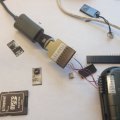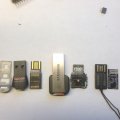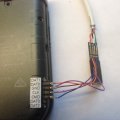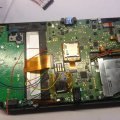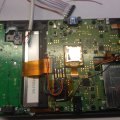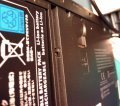There's no solderless way to do this, is there? I'm guessing Nintendo has a contraption to connect to these spots, but that's too out of reach for us common folk?
If you don't mind, I have a few questions:
I guess that's all I can think of now. Better, before "a few questions" becomes "an essay of questions."
Thanks for any help and thanks Avalynn and the others for figuring this out.
If you were in the US I'd love to help you out!
Alright so let's go!
i) Can connectors from a broken computer PSU be used? The only electronic parts store in my area didn't have any of the right connectors. They did have USB connectors.
Yes anything that can join copper to copper to form a connection can be used. You can use connectors from other things but make sure you have the matching male and female and plan where you are going to put what. Ensure enough room is there to be able to close the system back up and not add any unnecessary pressure to the motherboard or the bottom LCD screen
ii) People are using MicroSD adapters in the thread. Are those the only option? I've got a useless 32MB SD card here - can I gut it for this? Or because of the built in memory, will it not have pins that will be useful for connecting to?
No it's not the only options there are lots of options, but it stands to reason that it is the easiest at times. You can gut and old SD card but you have to make sure to disconnect the controller from the board, which in retrospect may be more hassle then it's worth.
iii) So to be sure: it's the spots soldered to wires about 4 or less inches long, which are then soldered to a female connector. Then separately, a male connector soldered to wires (limit of length?) that go into the SD case and get soldered to the pins in the SD according to the diagram Avalynn posted a few pages back. And for a 4-pin/wire connection, the spots are CMD, CLK, GND and DAT0. The only other option is all 7 spots, but that's just more risky soldering. Did I get all of that right?
Yes, the wire length limit is because you are reading high speed signals and the less resistance and less possible noise induction on the lines, the better. Yes there is only 1x mode or 4x mode as per the eMMC specifications datasheet, so either 1 DAT line or all 4.
iv) I just came up with an idea a while ago while thinking of custom amiibos, but unsure if it'll work. Can each spot to be soldered be surrounded by tape or modeling clay/putty/sticky tack to isolate it and prevent spots or anything else from touching? Only during the soldering and removed after.
The entire system needs to be disconnected and removed from the housing to work on the opposite side. You could solder each part and cover that with kapton tape or the like, but the points are relatively close together and you really don't need to worry about it too much if you are using thin enough gauge to not strain the points on the board. But yes you can tack each wire down as you go for sanity reasons, not a bad idea.

v) Do the spots need to be scratched or "revealed?" A few posts mentioned exposing them or something similar, so I was unsure if the yellow/gold was some kind of seal to prevent a connection and needs to be taken off. Or can the spots be soldered to as is?
Well sometimes board are covered in a conformal coating to protect from moisture, mildew, and the like. This board however doesn't seem to have a conformal coating or is really thin, I recommend using the flux that is in your wire, or separate flux, to get the pads "pre-tinned" with solder, then tinner your wire and finally joining the two. Remember to clean the board when you are done with 90%+ IPA gently.
vi) Once soldering was finished, and a dump attempted, how could I know the NAND was successfully being backed up? A consistent size of 1.84 GB (1,979,711,488 bytes) for my THGBMBG4 NAND/eMMC? And at that point, test writing back the image to the system?
Another thing you can do is look at it with a hex editor like HxD for windows, and look for NCSD, perform multiple dumps in the same run and compare them. The dumps change slightly each time the system fully boots (if i recall correctly)
I hope this helps and please if you have any more questions feel free to ask, and I will do my best to answer them










